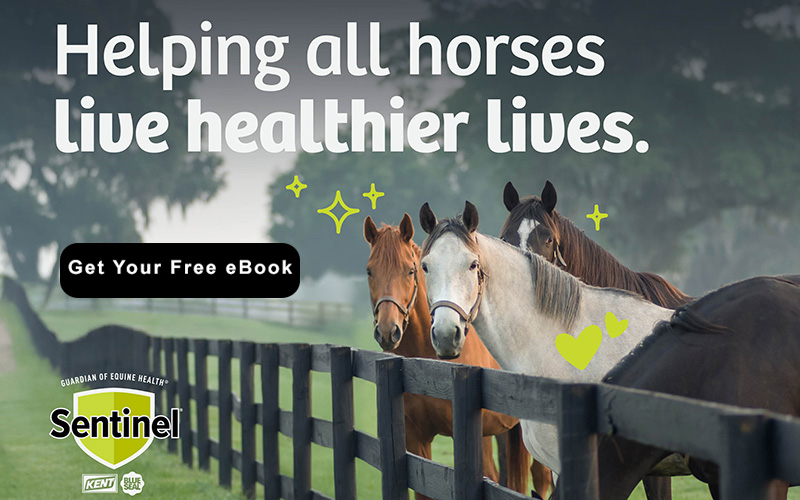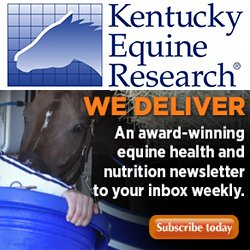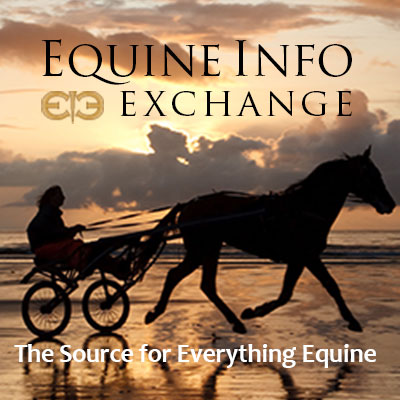
by Kentucky Equine Research Staff
Many performance horses are exercised at sun-up or earlier. Think about racehorses in training or show horses schooling before early-morning classes. The horses are pulled from their stalls, groomed, and tacked up; trainers and riders discuss the training plan for this daybreak bout of exercise. But does the groom, rider, or trainer think about the horse’s gastric well-being at that time? Maybe, maybe not.
When horses are exercised on an empty stomach, gastric acid splashes onto the squamous, or upper, portion of the stomach. Repeated exposure of gastric acid to this sensitive tissue can increase the risk of gastric ulcers. Prolonging hay consumption into the early morning hours can help protect performance horses from these ulcers. But when do horses eat during the night? Do they consume more hay before or after midnight?
To better understand nighttime feeding patterns, scientists at Kentucky Equine Research recorded horse behavior using two technologies: chewing halters and overhead cameras. They presented hay in various ways (one hay net or two and hay nets in different positions) to determine whether these configurations affected intake behavior.
The researchers outfitted six horses with chewing halters from 7:00 p.m. to 7:00 a.m. and fed them hay equal to about 1.26% of their body weight while stalled. In the first phase of the study, they placed hay in either one hay net or split the hay between two hay nets, positioning the top of each net parallel to the horses’ withers. In the second phase, they tested two positions of hay nets. One treatment included a hay net at withers height, and the second treatment involved a hay net placed much lower, nearly at ground level.
The chewing halters allowed the team to measure how long the horses spent chewing throughout the night, while the overhead cameras revealed when the hay nets became empty.
“Offering hay in different configurations—one net or two, hay net hung high or low—did not affect time spent eating overnight when a limited amount of hay was offered, as it was in this study,” said Ashley Fowler, Ph.D., director of research at Kentucky Equine Research. Most horses steadily consumed their allotted amount of hay until it was gone, with few horses taking significant breaks from eating.
In this study, the researchers stalled the horses to allow easy camera monitoring. Horses in other living situations may benefit from multiple feeding stations. According to Fowler, “We did not observe any advantage to hanging two hay nets instead of one in this study. In larger enclosures, such as dry lots, using multiple hay nets may encourage horses to walk between foraging locations. Horses that need to lose weight may benefit from increased movement.” Even more movement can be encouraged by placing water sources far from forage stations.
Fowler and her colleagues at Kentucky Equine Research are fine-tuning a follow-up study that will allow free-choice access to hay. “If horses are given free access to hay, we believe they will take more breaks during the night to rest, and there may be short bouts of eating rather than one long eating period, as seen in this study,” she said.
Reprinted courtesy of Kentucky Equine Research. Kentucky Equine Research is an international equine nutrition, research, and consultation company serving horse owners and the feed industry. Our goals are to advance the industry's knowledge of equine nutrition and exercise physiology, apply that knowledge to produce healthier, more athletic horses, and support the nutritional care of all horses throughout their lives. Learn more at Kentucky Equine Research.
There a more informative articles in our section on Health & Education. While you're here be sure to visit our Curated Amazon Store.

































